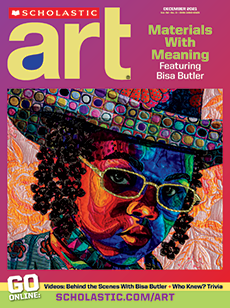Bryan Bedder/Getty Images
Julie Mehretu
Have you ever seen a painting that appears to move? Julie Mehretu’s (mehr-EH-too) monumental abstract paintings do just that, through spinning arrangements of lines, shapes, and color.
Motion has been a driving force in Mehretu’s work and life. Born in Ethiopia in 1970 to an Ethiopian father and an American mother, Mehretu and her family immigrated to the United States in 1977. She’s since lived in Michigan, Rhode Island, California, New York, Germany, and Senegal. Her dynamic, collage-like paintings whirl with energy and excitement, and have made her a leading contemporary artist.
Have you ever seen a painting that looks like it’s moving? Julie Mehretu’s (mehr-EH-too) monumental (larger than life) paintings do just that. Mehretu uses spinning arrangements of lines, shapes, and colors to create high energy in her abstract work.
Motion has been an important part of Mehretu’s work and life. She was born in Ethiopia in 1970. Her father is Ethiopian, and her mother is American. The family immigrated to the United States in 1977. Mehretu has since lived in Michigan, Rhode Island, California, New York, Germany, and Senegal.
